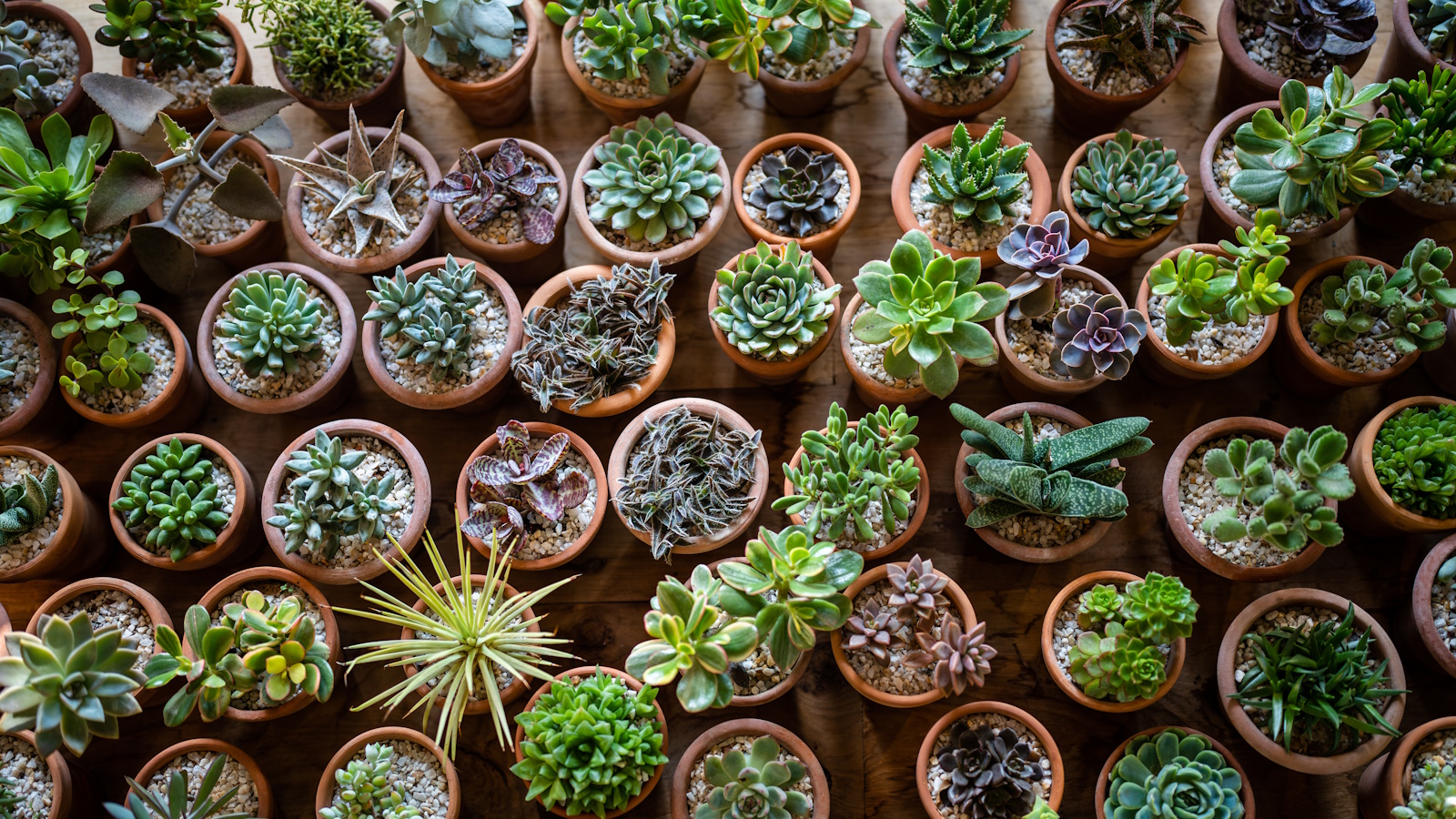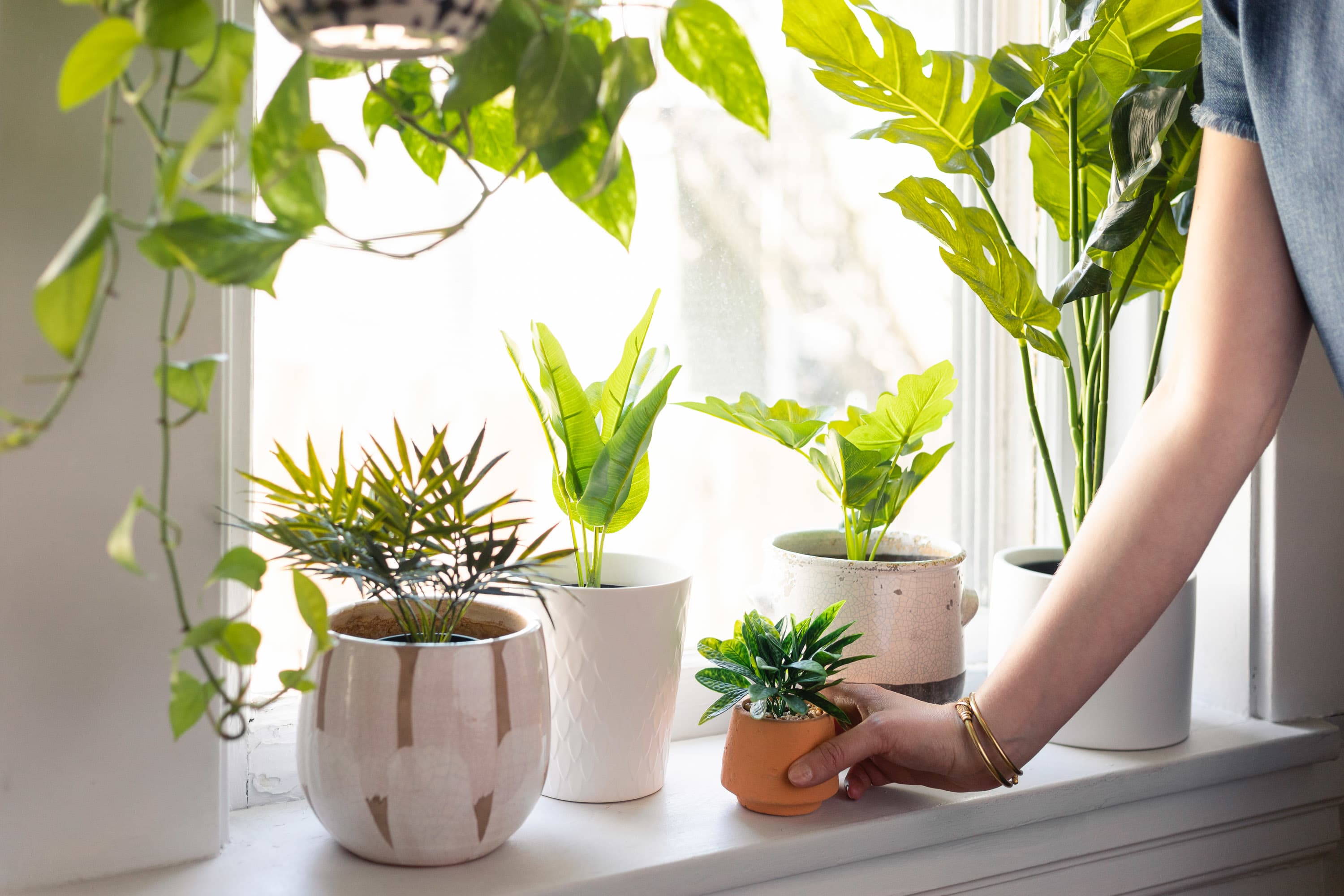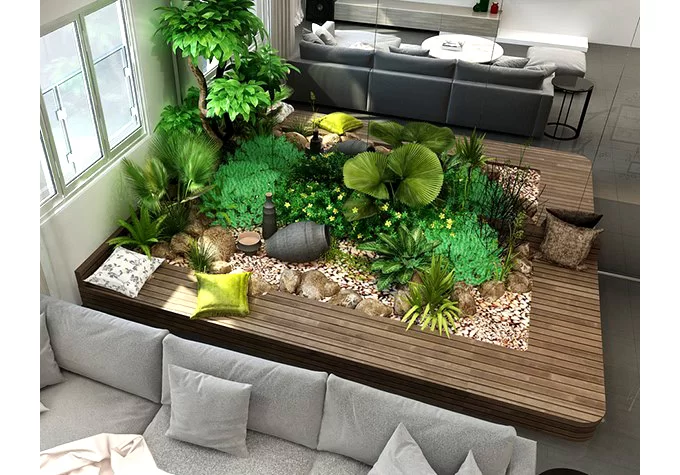News
Choosing Miniature Houseplants for Apartments: Beautiful and Easy to Care For
Introduction
Living in an apartment doesn’t mean you have to give up on greenery. In fact, the right miniature houseplants can transform even the smallest studio into a fresh, inviting space. For busy city dwellers, [main keyword] is an ideal way to bring nature indoors without sacrificing time or square footage.
This guide explores how to choose, arrange, and care for miniature plants that thrive in apartments. You’ll discover species suited to different light conditions, learn creative display ideas, and get practical maintenance tips — all with an emphasis on plants that are beautiful, space-saving, and easy to look after.
Why Miniature Houseplants Work So Well in Apartments

Maximizing Small Spaces
Mini plants fit on windowsills, bookshelves, or desks without crowding your living area. Their compact size also allows you to experiment with groupings and themes, creating a mini-garden even in a tight corner.
Improving Air Quality and Mood
Even small plants contribute to better indoor air by releasing oxygen and trapping dust. They also provide a calming visual break from screens and help you feel more connected to nature — important benefits when you live in a high-rise surrounded by concrete.
Low Maintenance for Busy Lifestyles
Most recommended miniature houseplants are hardy species that tolerate irregular watering and variable light. This makes [secondary keyword: easy-care indoor plants] perfect for people with hectic schedules.
Understanding Your Apartment’s Conditions
Assessing Light Levels
Before choosing plants, observe how much natural light each room gets. A south-facing window offers bright direct sun, while a north-facing one provides soft, indirect light. Matching plant species to your apartment’s light conditions is the key to success.
Considering Temperature and Humidity
Apartments often have central heating or air-conditioning that can dry the air. Look for species that tolerate low humidity or be prepared to group plants together to create a microclimate.
Safety and Allergies
If you have pets or small children, double-check that your chosen plants are non-toxic. Many miniature species have safe alternatives if you need them.
Mini Plants for Bright, Sunny Apartments

Succulents and Cacti
These sun-lovers store water in their leaves and stems, making them incredibly low-maintenance. From rosette-shaped echeverias to spiky haworthias, succulents come in endless shapes and colors.
Display Tip: Arrange several small succulents in a shallow dish garden with decorative stones for a modern look.
Care Tip: Use a cactus soil mix and water only when the soil is completely dry to prevent rot.
Dwarf Citrus or Herb Pots
If your apartment gets at least five hours of direct sunlight, consider a small lemon tree or a pot of sun-loving herbs. These add fragrance and can even supply fresh ingredients for your kitchen.
Display Tip: Place on a sunny balcony or near a large window for both visual appeal and culinary convenience.
Care Tip: Provide a well-draining potting mix and regular feeding during the growing season.
Mini Plants for Low-Light Apartments
ZZ Plant (Zamioculcas zamiifolia)
The ZZ plant thrives in shade and tolerates neglect. Its glossy, dark green leaves make a chic statement in modern interiors.
Display Tip: Place on a hallway console or in a bathroom with little natural light.
Care Tip: Water sparingly and allow the soil to dry between waterings.
Pothos (Epipremnum aureum)
This trailing vine adapts to almost any light level. Its heart-shaped leaves with variegated patterns brighten dim corners.
Display Tip: Train it to climb a small trellis or let it cascade from a hanging pot.
Care Tip: Water when the top inch of soil feels dry and trim regularly to keep it full.
Flowering Miniature Plants

African Violet
A classic small plant with soft leaves and clusters of purple, pink, or white blooms. African violets are perfect for adding a pop of color to shelves or side tables.
Display Tip: Group several in matching pots for a coordinated look.
Care Tip: Keep soil evenly moist but avoid splashing water on leaves. Provide bright, indirect light for continuous blooms.
Mini Orchids (Phalaenopsis)
Modern breeding has produced compact orchids that fit easily on windowsills. Their elegant flowers last for weeks, adding sophistication to any room.
Display Tip: Use sleek ceramic planters to complement their exotic look.
Care Tip: Water thoroughly once a week and let excess drain away. Bright, indirect light keeps blooms coming.
Creative Display Ideas for Mini Plants
Vertical Gardens and Wall Planters
Install wall-mounted pockets or modular panels to create a living wall. This saves floor space and turns your greenery into art.
Terrariums and Glass Jars
Enclosed terrariums are perfect for moisture-loving plants like mosses and ferns. They create their own micro-ecosystem, reducing maintenance.
Grouping for Impact
Combine different textures — a spiky succulent, a trailing vine, and a blooming mini plant — on a single tray or shelf. This variety creates depth and interest without taking up more space.
Caring for Mini Plants in Apartments
Watering Strategies
Small pots dry out quickly, but overwatering is still the most common mistake. Always check soil moisture before watering. Using a small squeeze bottle or narrow-spout watering can helps deliver water precisely.
Fertilizing for Healthy Growth
Because miniature plants have limited soil volume, they benefit from regular but dilute feeding. Use a balanced liquid fertilizer every four to six weeks during the growing season.
Cleaning and Pruning
Dust can accumulate on leaves, reducing photosynthesis. Gently wipe leaves with a damp cloth and trim yellowing foliage to keep plants healthy and attractive.
Combining Mini Plants With Decor Styles
Minimalist Interiors
Choose plants with clean lines and neutral pots — succulents, ZZ plants, or mini orchids — to complement uncluttered spaces.
Bohemian Vibes
Mix trailing vines, colorful blooms, and patterned planters for a lush, eclectic feel. Add macramé hangers for extra texture.
Modern Industrial
Use geometric planters or metal stands with hardy greens like snake plants or dwarf palms. The contrast of steel and foliage softens industrial elements.
Benefits Beyond Beauty
Stress Reduction and Productivity
Studies show that having plants in your living space lowers stress, improves focus, and even enhances creativity. For apartment dwellers, these benefits are especially valuable after long days in crowded urban environments.
Natural Humidifiers
Many miniature plants release moisture into the air, easing dryness caused by heating or air-conditioning. Grouping plants multiplies this effect, creating a healthier microclimate.
Educational Opportunities
Caring for mini plants can be a rewarding hobby for adults and a fun science lesson for kids. Observing growth cycles fosters patience and appreciation for nature.
Troubleshooting Common Problems
Overwatering and Root Rot
If leaves yellow or soil smells sour, reduce watering and check drainage holes. Repot if necessary.
Pests
Aphids, spider mites, and fungus gnats sometimes appear. Isolate the affected plant and treat with gentle insecticidal soap or neem oil.
Light Deficiency
If growth slows or leaves lose color, move the plant closer to a window or supplement with a small LED grow light.
How to Start Your Own Mini Plant Collection
Begin With Three Complementary Species
Select one sun-lover, one shade-tolerant, and one flowering mini plant. This gives you variety and lets you learn different care routines.
Add Creative Containers
Use matching pots for a clean look or mix styles for a playful arrangement. Make sure every container has drainage holes.
Evolve Your Collection Over Time
As you gain confidence, try more unusual species or create themed displays (succulent bowls, fern shelves, or blooming windowsills).
Moving Beyond a Simple Plant List: Designing a Miniature Green Lifestyle
Mapping Micro-Zones Inside an Apartment
Every apartment has little differences in light, air flow, and humidity — a sunny window ledge, a dim hallway corner, a bathroom with steam. Thinking in terms of micro-zones lets you match plant types to each niche and create a tapestry of greenery that feels intentional. For example, a moisture-loving moss terrarium can sit by the shower while a tiny succulent thrives on a bright kitchen sill. This approach multiplies the impact of even a handful of small plants.
Layering Heights and Textures
Miniature plants aren’t just for shelves. Use small risers, plant stands, or hanging holders to vary heights and create depth. Combining spiky, round, trailing, and velvety foliage turns a single tabletop into a living diorama, giving the illusion of a larger collection without taking up more space.
Creative Containers and Display Techniques
Upcycling for Personality
Old teacups, candle jars, or wooden boxes can be repurposed as planters for miniature plants. This not only saves money but also tells a story, making your greenery part of your décor narrative. Just ensure you add drainage holes or a layer of pebbles to protect roots.
Vertical and Modular Systems
Wall-mounted pockets or magnetic planters transform unused vertical space into a living gallery. Modular systems let you rearrange plants easily as they grow or as your tastes change — perfect for renters who can’t make permanent alterations.
Tabletop Terrariums as Mini Worlds
Closed or semi-closed glass containers can house mosses, mini ferns, or air plants. These self-contained ecosystems stay humid, reducing maintenance and creating a jewel-box focal point on desks or coffee tables.
Integrating Mini Plants Into Your Daily Life
Mindful Micro-Breaks
Turn plant care into a daily two-minute ritual: a quick mist, a leaf wipe, a gentle rotation. This pause away from screens doubles as a mindfulness exercise, lowering stress and strengthening your bond with your green companions.
Linking Greenery With Functional Zones
Place a small calming plant on your work desk to reduce eye fatigue, a fragrant mini herb near your cooking space for culinary inspiration, and a trailing vine by your reading chair to soften the corner. Each placement supports a habit or mood, making plants part of your lifestyle rather than just décor.
Styling Mini Plants for Different Interiors
Minimalist Apartments
Stick to a restrained palette of green foliage in sleek white or gray pots. Group three mini plants of varying height on a tray to create a single, sculptural statement.
Eclectic or Bohemian Vibes
Mix patterned planters, trailing vines, and flowering mini species. Add macramé hangers, woven baskets, or driftwood accents to enhance the organic feel.
Industrial-Chic Spaces
Use geometric metal holders or concrete planters with hardy greens. The contrast of soft leaves against raw surfaces balances the coolness of steel and brick.
Smart Care Systems for Busy Apartment Dwellers
Self-Watering and Wick Planters
Many miniature plants fit perfectly into self-watering systems that provide a steady supply of moisture from below. This reduces the risk of forgetting and keeps soil at a consistent dampness.
Mini Grow Lights
Discreet LED grow bulbs that screw into standard lamps allow you to support plants even in windowless corners. Modern designs look like regular lighting, so you can integrate them seamlessly into your décor.
Digital Tracking
Simple apps let you log watering dates, fertilizing schedules, and growth notes. Over time, you’ll learn each plant’s rhythm, preventing overcare or neglect.
Sustainability and Ethical Choices
Peat-Free and Organic Mixes
Choose potting soils that avoid peat extraction and fertilizers that are gentle on the environment. Even small apartment gardens can reflect big values.
Local and Small-Scale Growers
Buying from neighborhood nurseries or hobby growers reduces transport emissions and often yields healthier, acclimated plants. You might also discover unusual miniature species not found in big-box stores.
Sharing the Green
Propagate your mini plants and gift them to friends or neighbors. This spreads greenery across your community and creates a support network for plant care tips and swaps.
Enhancing Well-Being With Sensory Design
Fragrance Without Overwhelm
Beyond the common aromatic plants already in your main article, experiment with subtle-scented mini herbs or blossoms whose aroma is released gently by touch. This adds a sensory layer of calm without overpowering a small space.
Color Psychology in Plant Displays
Use warm-toned foliage to energize a study area and cool-toned greens to soothe a bedroom corner. Even the color of planters affects mood; soft neutrals promote relaxation, while bold hues create a playful vibe.
Movement as a Visual Cue
Air plants suspended on thin wires or trailing vines that sway when the window is open introduce motion, making your indoor garden feel alive and dynamic.
Case Studies: Mini Plant Success Stories
The Studio Apartment Nook
A designer transformed a single windowsill into a miniature jungle by combining a moss terrarium, a trailing vine in a wall pocket, and a tiny cactus in a repurposed coffee mug. This three-tiered arrangement brought depth and interest without clutter.
The Home Office Refresh
A remote worker placed a self-watering pot of small, glossy-leafed greenery beside her monitor. The routine of misting it each morning became a calming ritual that improved focus during long calls.
The Family Kitchen Corner
A couple created a rotating display of mini edible herbs in magnetic planters on their fridge. They harvest fresh sprigs for cooking while enjoying a living, fragrant accent.
Looking Ahead: The Future of Miniature Plant Decor
Movable Green Modules
Expect more lightweight, clip-on systems that let renters build and rearrange living walls without drilling. These modules can shift seasonally or as your collection grows.
Hybrid Tech-Plant Products
Designers are experimenting with planters that double as wireless speakers, air purifiers, or mood lights — perfect for small apartments where every object must do double duty.
Data-Driven Growing
Affordable sensors measuring humidity, light, and soil nutrition will soon sync with apps to recommend ideal plant placements in real time, turning your apartment into a living laboratory.
Conclusion: From Small Plants to Big Impact
Miniature houseplants are more than just a cute trend. With thoughtful placement, creative containers, mindful care, and sustainable sourcing, they become a powerful tool for improving your apartment’s air, aesthetics, and atmosphere. By moving beyond a basic plant list into lifestyle integration, you’ll transform your home into a personalized green retreat that fits your space and your schedule.
Planning a Mini-Green “Ecosystem” in Your Apartment
Thinking in Terms of Functions, Not Just Species
Once you’ve selected a few small plants, start planning how they work together. Instead of listing more plant names, design by function: one plant to add fragrance, one to filter air near your desk, one to create a visual screen between living and working zones. This functional approach turns a random assortment into a coherent micro-ecosystem.
Mapping Light and Activity Patterns
Watch how light shifts during the day and where you spend your time. Place your miniature greenery so you see it from frequently used angles — near your reading chair, above your sink, beside your laptop. This maximizes both visual enjoyment and well-being without adding new species.
Styling Miniature Plants as Part of Your Decor
Creating “Vignettes” Instead of Rows
Group three or four mini plants with a candle, a book stack or a small sculpture on a tray or sideboard. This creates a styled vignette rather than a cluttered lineup and makes your greenery feel integrated with the room design.
Using Height and Negative Space
Even tiny plants can look dramatic if you vary height and leave breathing room. Place one on a low shelf, another hanging from a macramé holder, and a third on a pedestal. Negative space between them lets each shine and prevents a crowded look.
Playing With Color and Material Contrast
Combine matte ceramic pots with glossy leaves, or wooden boxes with silver-toned foliage. Repeating a few materials across the apartment ties disparate plant corners together visually.
Integrating Plants Into Daily Routines
Linking Greenery With Habits
Put a calming mini plant where you make tea, an energizing one by your workout mat, and a fragrant one near your entryway so you touch or smell it as you come home. This links plant care with existing habits, making upkeep effortless.
Micro-Breaks for Mindfulness
Take 30 seconds to mist a terrarium, rotate a pot or pinch off a dead leaf between tasks. These micro-breaks give your eyes a rest from screens and help reset your nervous system.
Enhancing Well-Being With Sensory Design
Subtle Scent Layering
Beyond the familiar herbs, experiment with mild-scented mini plants or dried petals placed among your pots. Heat from sunlight releases delicate aromas that make small apartments feel fresher and more spacious.
Textures That Invite Touch
Mix soft mosses, firm succulents and glossy foliage so you engage multiple senses, not just sight. Children especially enjoy gently feeling different textures — a tactile way to learn about nature indoors.
Movement as a Calming Signal
Hang lightweight trailing vines or air plants where they sway with drafts from a window or fan. Even slight motion signals life and freshness, adding vitality to still indoor air.
Smart Maintenance and Sustainability
Automated Watering for Tiny Pots
Self-watering inserts and wicks are now available in sizes small enough for miniature planters. They keep soil evenly moist without mess, ideal for busy renters or travelers.
Eco-Friendly Soil and Fertilizer
Choose peat-free mixes and gentle organic feeds that suit small containers. This aligns your apartment garden with sustainable values and often yields healthier plants.
Sharing and Swapping
Propagate cuttings from your mini plants and trade them with neighbors or online groups. This keeps your collection fresh without extra cost and spreads greenery through your building.
Case Examples of Mini-Green Success
The Desk Sanctuary
A student placed a trio of tiny plants in repurposed espresso cups on her study desk. She mists them while waiting for files to download — a micro ritual that reduces stress during long study sessions.
The Kitchen Herb Rail
A young couple installed a magnetic rail on their backsplash with miniature pots of edible herbs. They harvest fresh sprigs for cooking and enjoy a living accent that takes up zero counter space.
The Bathroom Retreat
In a small windowless bathroom, a renter set up a closed glass terrarium with moisture-loving moss and a small LED grow light. It acts like a living sculpture and requires watering only once a month.
Looking Ahead: The Future of Miniature Houseplant Decor
Modular Green Panels
Clip-on living panels that hold mini plants are becoming mainstream. They let renters create a green wall without drilling, then reconfigure it seasonally or when moving.
Hybrid Tech-Plant Products
Expect to see planters that double as wireless chargers, speakers or air purifiers — perfect for compact apartments where every object must multitask.
Data-Driven Placement
Affordable sensors will soon recommend ideal spots for each mini plant based on real-time light and humidity readings. This turns your apartment into a living lab for optimizing greenery.
Conclusion: From Tiny Pots to a Big Lifestyle Shift
Miniature houseplants are not just ornaments; they’re tools for creating a calmer, fresher and more inspiring apartment. By thinking in terms of functions, habits and sensory design rather than simply adding more species, you transform a few small pots into a living ecosystem that supports your well-being every day.
Conclusion
Even in a small apartment, greenery can make a big difference. By focusing on miniature houseplants for apartments: beautiful and easy to care for, you can enjoy the freshness and charm of nature without crowding your space or complicating your routine.
Start by assessing your light and temperature conditions, choose a few resilient species that match your lifestyle, and experiment with creative displays. With regular but simple care, your miniature plants will thrive, improving your home’s atmosphere, your mood, and your sense of connection to the natural world.
Ready to transform your apartment into a green oasis? Begin with one or two mini plants today and watch your living space — and your well-being — flourish.

